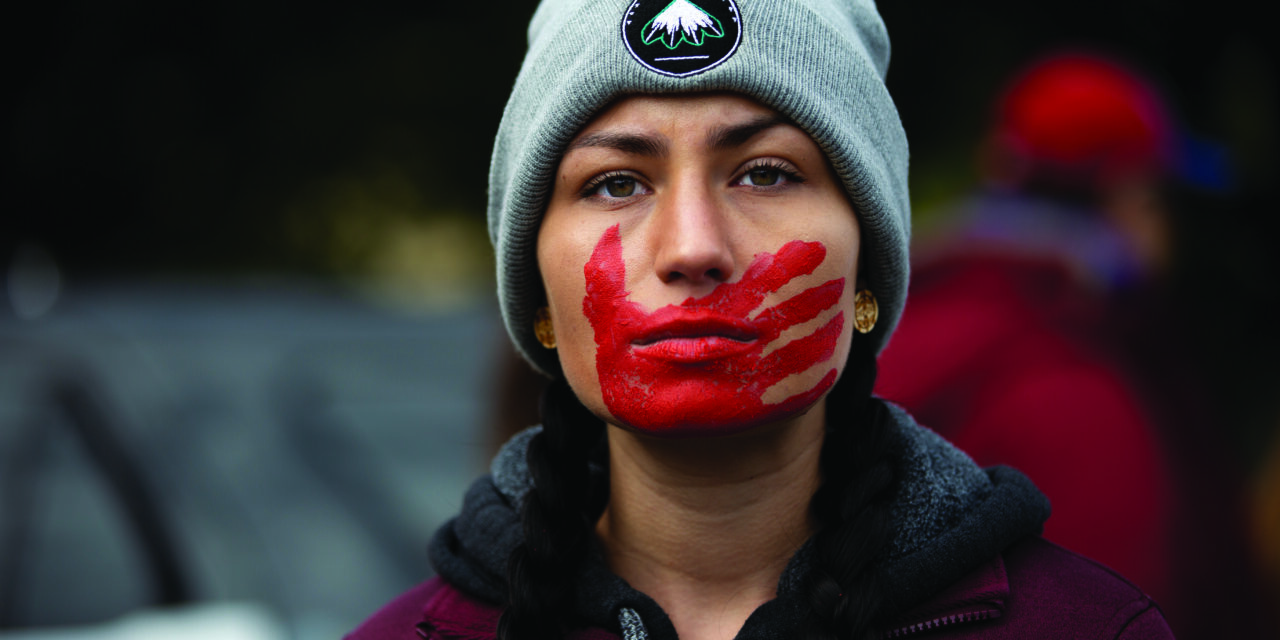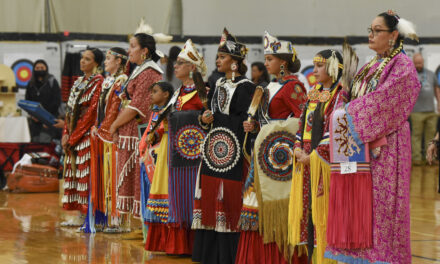There is an ongoing epidemic of Indigenous women going missing and being murdered in the United States and Canada. Indigenous women have been the consistent targets of violence and hatred, with their proximity to poverty and homelessness further emphasizing this issue. Indigenous women experience domestic violence at an estimated rate of 10 times higher than the national average for all races. The rates are higher the more impoverished the community is. Unfortunately, loopholes in tribal law only serve to further
fester this violence.
There is inconsistency in the relationship between tribal, local and federal law enforcement, primarily due to the ruling of Oliphant v. Suquamish in 1978, which made it so that Native American courts have no criminal jurisdiction over non-native offenders. Therefore, if a non-native person enters the authority of a Native reservation and commits a crime, the Native courts cannot legally charge them. This has created a serious issue amongst Native women and has subsequently made them major targets for crimes such as rape, assault, kidnapping and sex trafficking at the hands of non-native criminals.
Data related to missing and murdered Indigenous women is difficult to gather in the U.S. The race and ethnicity of Indigenous people are often mismarked in law enforcement records, and forensics are often not accurately collected from unidentified victims. This causes a myriad of cases to go cold due to the lack of “crucial” evidence or because local law enforcement does not forward said evidence to the federal justice system for further investigation. Violent crimes committed within reservations must be tried by the federal government due to The Major Crimes Act of 1885, which limits the jurisdictions of tribal law enforcement.
According to the Urban Indian Health Institute (UIHI), so far at least 506 Indigenous women and girls have gone missing in 71 American cities. 95 percent of these cases were never covered by the media, and the circumstances surrounding their disappearances are largely unknown. 506 is very likely to be a gross underestimate of the Indigenous women that have gone missing due to underreporting, and many law enforcement agencies lack information about the trends of missing and murdered Indigenous women.
The UIHI reported that in 2016, 5,712 cases of missing women in the U.S. were reported to the National Crime Information Center, but only 116 were logged into the U.S. Department of Justice’s missing persons database. This truly displays the American legal system’s consistent disregard for minority groups and the crimes committed against them and shows that little has been done to truly mitigate these distressing problems.
In Canada, a similar theme is happening. In 2019, a 1,200-page report was leaked to CBC that highlighted the disproportionate deaths of Indigenous women and blamed it on colonialism and government inaction.
An inquiry was performed in response to the report, concluding that 1,200 Indigenous women had been murdered or abducted since 1980. Many activists believe the number is much higher due to underreporting, much like in the U.S. Activists believe these cases lack proper investigation due to police bias, especially cases such as Canadian serial killer Robert Pickton.
Pickton confessed to killing 49 women spanning from 1983 to 2002, eventually charged with 24 of his murders in 2007. Most of his victims were prostitutes and Indigenous women, and the families of the victims strongly believe that he went so long without being caught because of this.
There have been attempts to draw these issues to lawmakers and government officials. In the US, states such as Washington, Wisconsin, Arizona and Minnesota have taken action to pass legislation that would increase awareness surrounding disproportionate crimes against Indigenous women and keep track of missing and murdered Indigenous women through databases. In 2020, Congress passed two bipartisan laws in 2020 to improve the federal response to crimes against Indigenous women. Former president Donald Trump started a task force called Operation Lady Justice that focused on missing and murdered Indigenous peoples. However, the federal law making it so that non-native offenders of crimes in tribal jurisdictions can’t be tried and charged by tribal law makes it difficult for states to work to truly resolve the issue.
Activists have been working the most to raise awareness. Indigenous activists have held protests and vigils to honor Indigenous women who’ve been murdered or have gone missing for years. They also have been using social media to raise awareness as well, especially among victims and their families, which has created an uproar of more community action within tribal regions. Some groups within tribal regions and reservations, such as the Navajo Nation, have taken the initiative of looking for missing Indigenous women themselves. They’re also working towards pushing the U.S. Supreme Court to overturn the Oliphant v. Suquamish so that non-natives who commit crimes against Native peoples will be able to be prosecuted within tribal law, likely bringing the rate of crime committed by them down.
Organizations have been formed to combat these problems as well. The National Indigenous Women’s Resource Center (NIWRC) is a nonprofit organization that’s main focus is to end gender-based violence toward Native American women through grassroots advocacy, and to provide health resources to Native women as well. The Sisters in Spirit initiative, created by the Native Women’s Association of Canada, was a one-year campaign created to more effectively research and document statistics of violence against Indigenous women in Canada and bring awareness to how Indigenous women are treated to bring change to public policy. Mending the Sacred Hoop is another nonprofit organization that addresses issues concerning violence and sexual victimization of Indigenous women. These are just a few examples among many others.
It is of the utmost importance that we, whether Indigenous or not, bring awareness to these issues. For hundreds of years, Indigenous people have been discriminated against and mistreated by the U.S. government and the Canadian government, and it left them vulnerable to things such as kidnapping, rape, assault and murder. There is no reason that non-native people should be allowed to go to their tribal lands and commit heinous crimes against them, but face no punishment because of federal jurisdiction laws.
Repost the accounts bringing awareness to these issues, engage with their organizations and protest with them. Although it may seem like we can’t do much, if we stand together hand and hand with our Indigenous sisters and brothers and use our voices to amplify theirs, perhaps we can make a difference that can change their lives for the better.
Originally Published 3/23/2023




